Advertisement
Running Shoes Are Potent Symbols In Marathon Memorial Exhibit
ResumeIn the wake of the Boston Marathon bombings, hundreds of letters, flags and especially running shoes became powerful symbols at the makeshift memorial in Copley Square. Now, after months in storage, a sampling of artifacts is on display in an exhibit at the Boston Public Library.
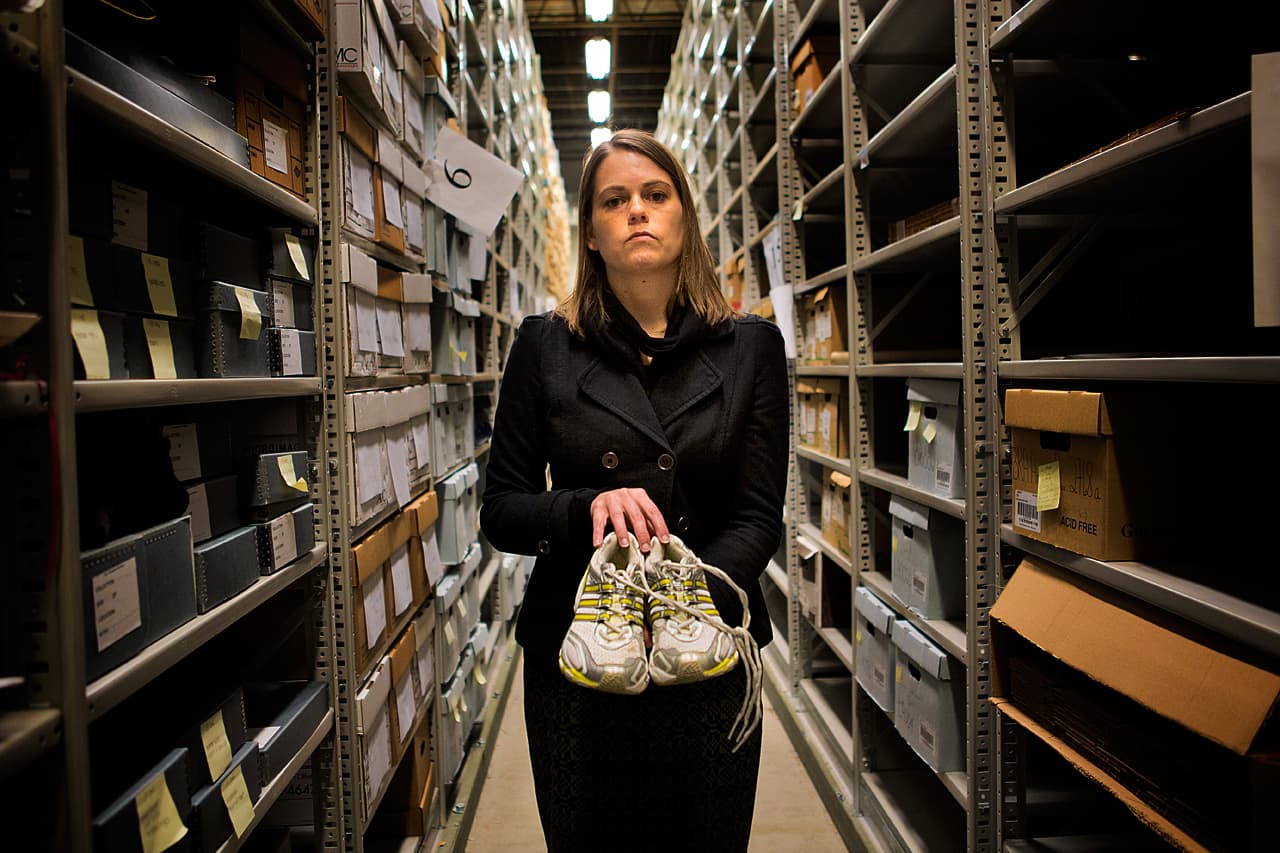
With the threat of rain last May, archivists started gathering up the most fragile paper notes and posters in Copley Square. The rest of the Boston bombing memorial was taken down last June, and thousands of objects were transported to two storage facilities — one owned by Iron Mountain, another run by the city of Boston.
It was at the cavernous City Archives in West Roxbury where I met archivist Marta Crilly and curator Rainey Tisdale. The temperature-controlled warehouse is home to rows of towering, gray industrial shelving. The boxes containing items from the bombing memorial bear labels such as "origami cranes," "bibs" and "drawings." Crilly stops to unfurl a khaki green piece of fabric.
"This is a flag from a run that happened at Bagram Airfield in Afghanistan," she explained. The flag is stitched with letters that spell out "In Memory of the Boston Fallen." Beneath those words are signatures from U.S. service men and women.
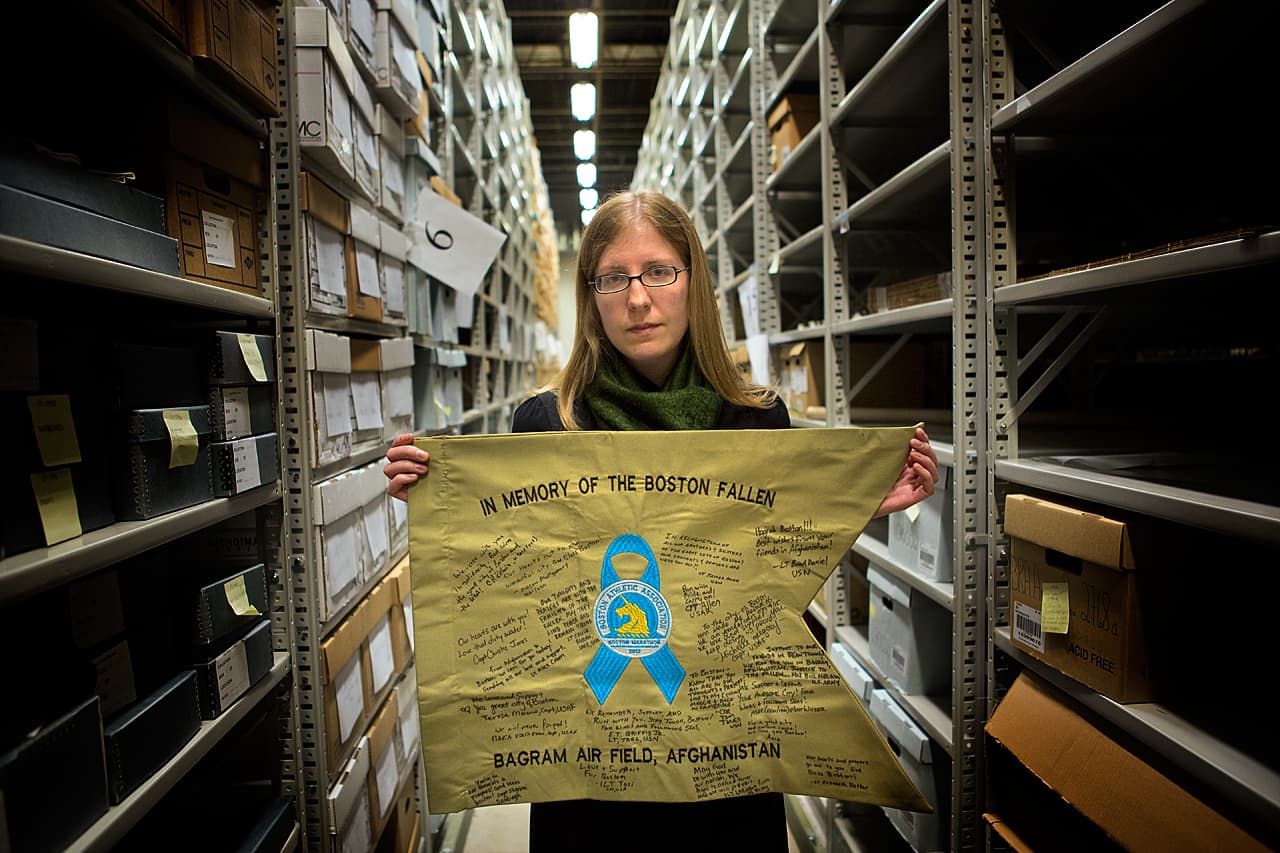
After the bombing, Crilly says, the mayor’s office received over 1,800 pieces of mail. She and the other archivists have been handling the vast collection for months and a few hundred items go on view at the Boston Public Library Monday as part of an exhibit titled "Dear Boston."
"I think our entire staff has had very difficult moments," Crilly said, stopping for a moment to hold back tears. "And we feel it’s very important for the people of Boston, and anyone who was in any way impacted by this event, to see these objects."
The exhibit's title is a reference to the messages that poured in from all over the world after the bombing.
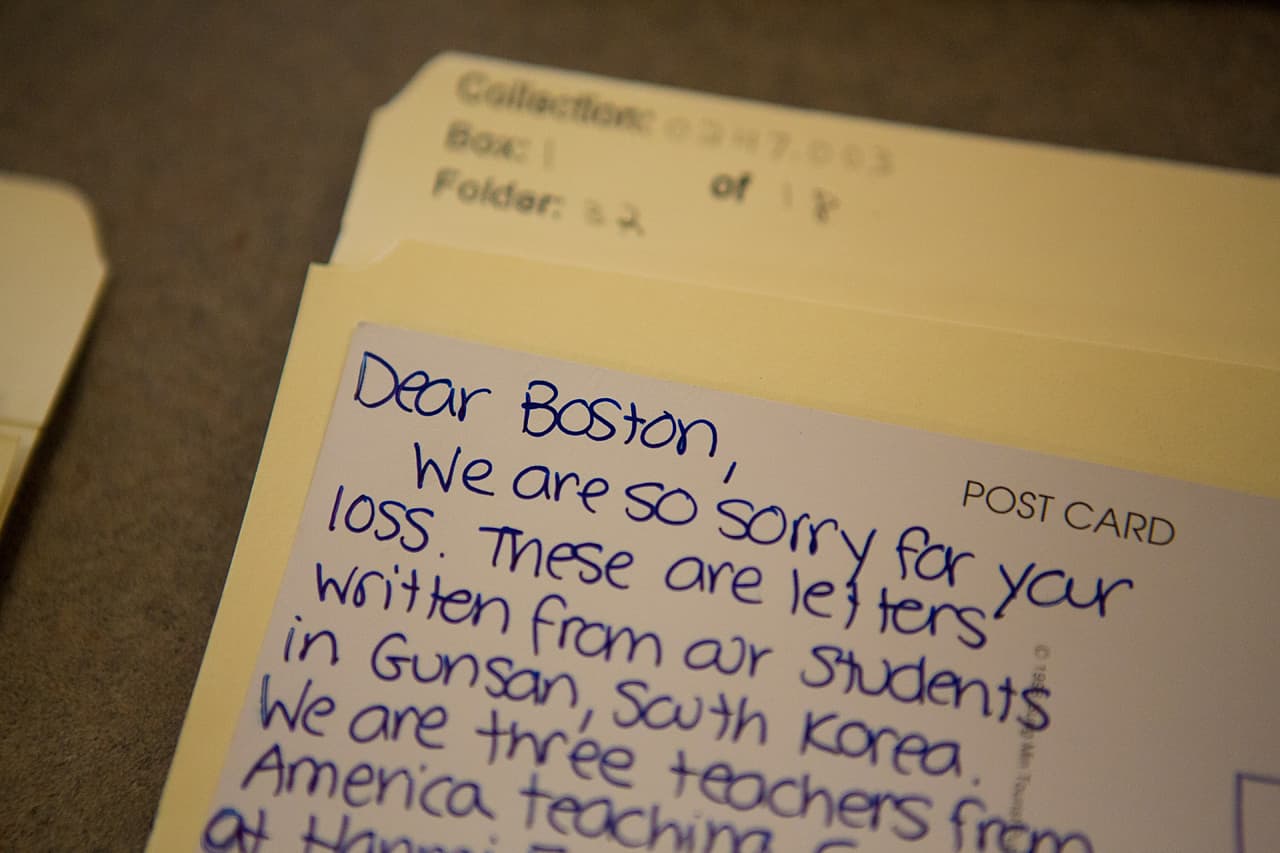
"Each piece that was left there at Copley Square was a form of communication, human being to human being," curator Tisdale said. "Seattle stands with Boston, Istanbul stands with Boston, Canada stands with Boston. But also Weymouth stands with Boston, Hingham stands with Boston, Springfield stands with Boston."
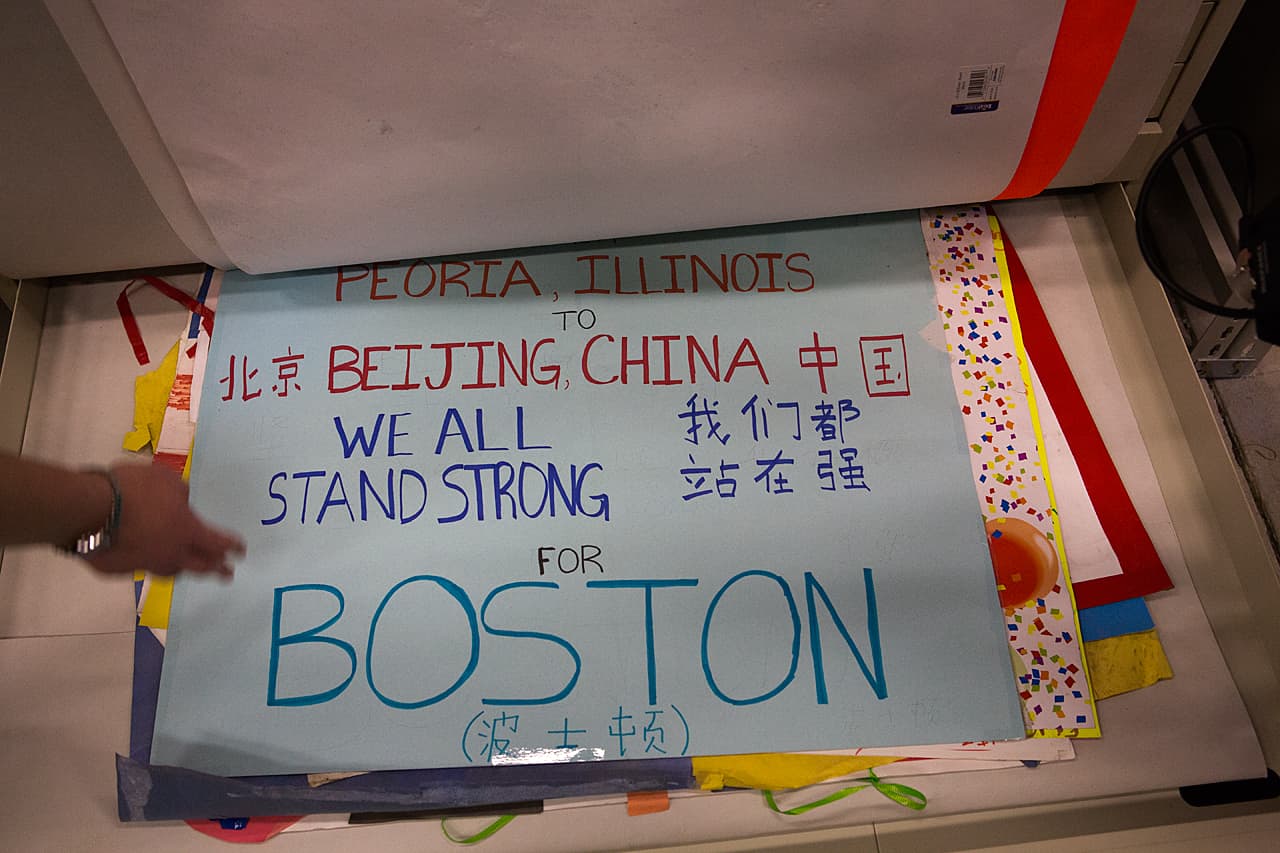
Tisdale specializes in urban history. During the April 19 lockdown and manhunt, she was calling colleagues in the museum and archive community to talk about their responsibility to preserve history as it was happening. Tisdale got the green light for the exhibit in February, which didn’t leave the curator, who usually works for city museums, much time to divine a narrative.
"Often the collections we’re working with it’s really a struggle to find the emotion and story in the object and bring it to the surface," Tisdale explained. "And this is a completely different kind of collection. The emotion is right there at the surface, if anything it’s overwhelming. And I think perhaps the shoes were the most intense."
As Tisdale sifted through 134 boxes of running shoes, considering each of the more than 600 sneakers one by one, she started thinking about memorials that sprang up in other cities after national tragedies like 9/11 and the Sandy Hook Elementary School shooting.
"Obviously this is not the first makeshift memorial we’ve seen," she reflected. "This is becoming the way that Americans do this now."
But the mass of running shoes, Tisdale says, is unique to the 2013 marathon collection.
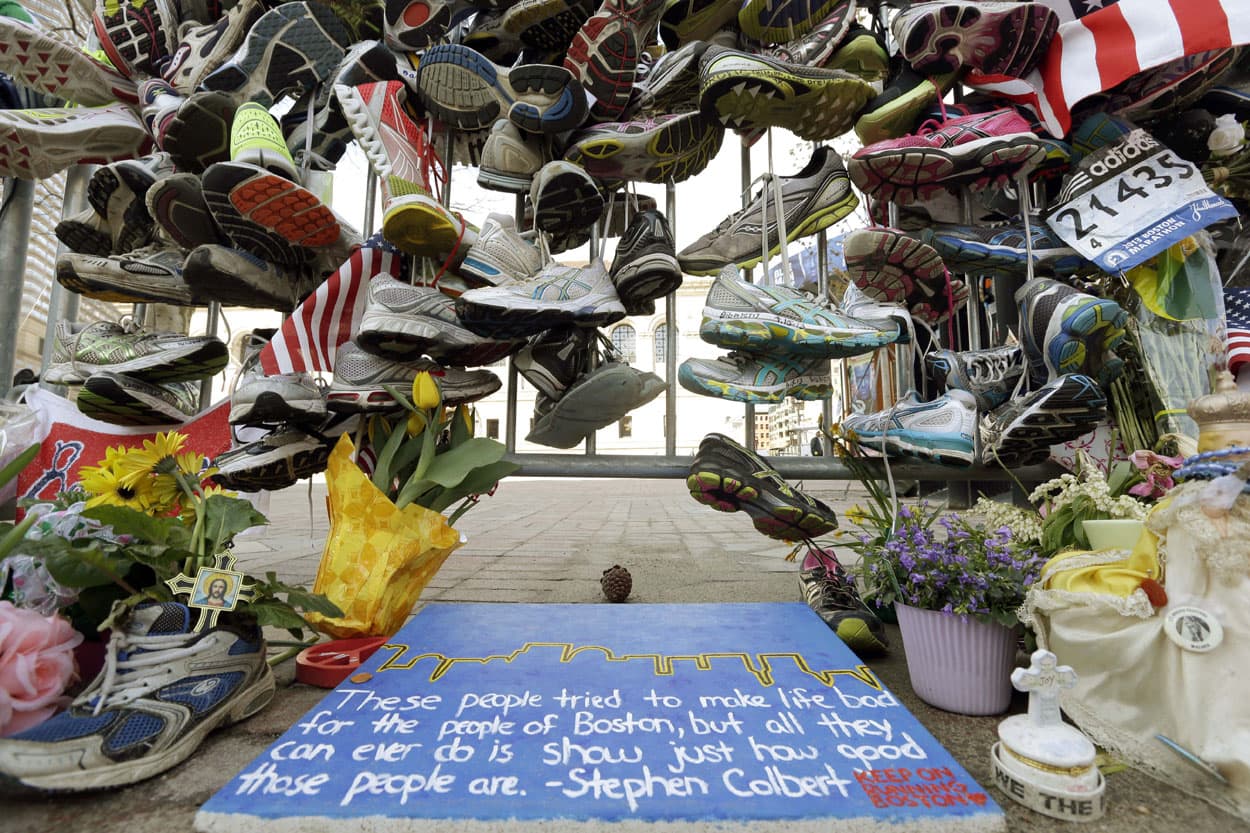
"So many of the objects at the memorial are powerful, but the shoes, they’re the things that make this makeshift memorial different from the others, from other tragedies," she said. "There’s the way that they symbolize running, they really do speak to this identity of runners, their shoes."
Unlike something created in response to the bombing — a note, collage or piece of artwork — Tisdale says these running shoes already had deep personal meaning before they were left at the memorial.
"They’ve got all sorts of wear marks on the soles from each runners tread. And there’s all the ways each runner has adapted the shoe so that they would get them through all those miles," she explained. "They have messages for the people they were running for, maybe they were running for a cancer survivor. They have their little tags from their charity team."
Tisdale says these are the types of things that embody the hope runners feel as they start a race.
"And then, on top of that, you’ve got this other layer which is about after the bombing," she added. "And these runners needing to leave their own message at the memorial, the message of a runner."
She calls them eulogies. Removing a box from the shelf to show me a pair of white running shoes with yellow trim, Tisdale recites the words written on the side of the outer sole.
"They say, 'You have my heart. You are my home. Boston Strong.' ”
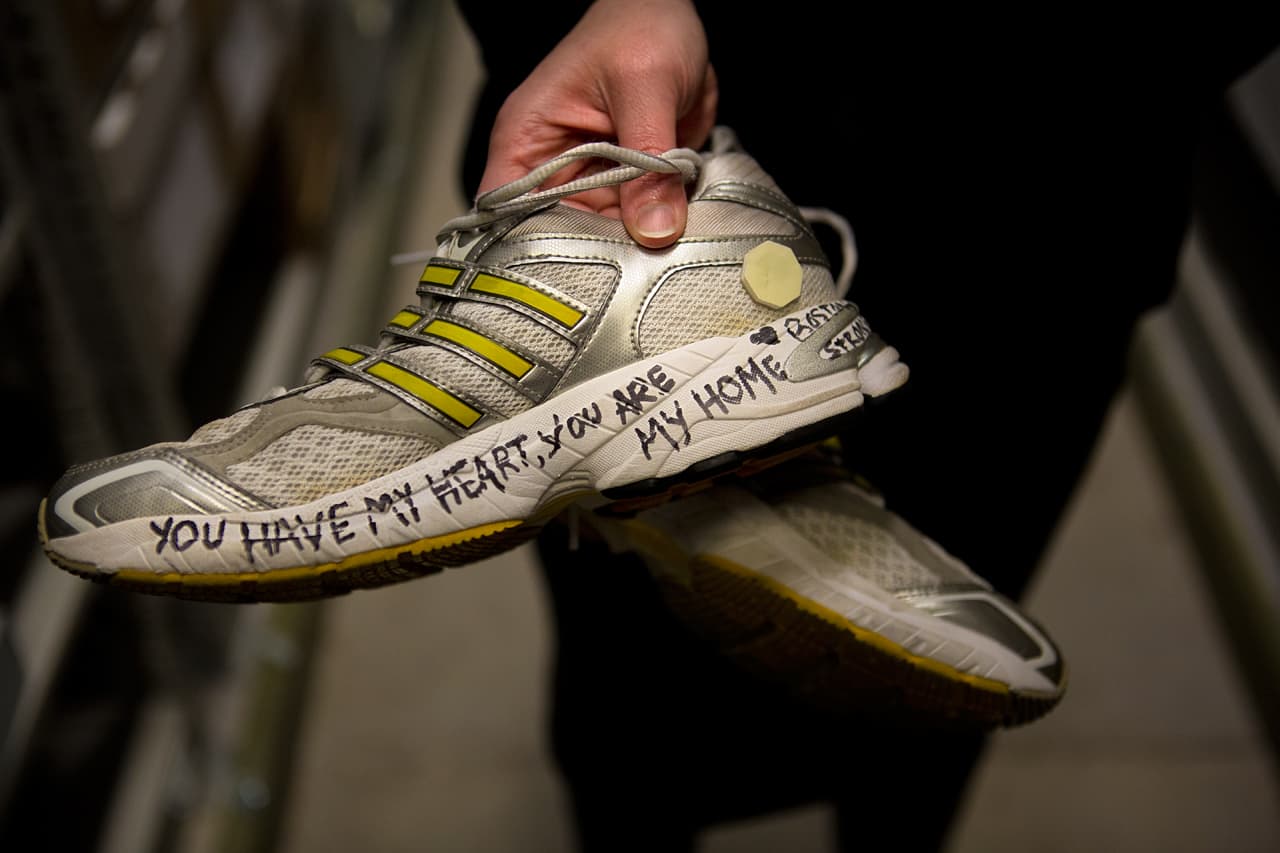
Tisdale thought hard about how to display the running shoes. At the BPL exhibit, about 150 pairs will be arranged in a square on a large platform. Individual shoes will catch your eye, but then recede back into the group — the way a runner sometimes does as part of a pack.

Samantha Joseph, the director of corporate responsibility at Iron Mountain, a storage company that donated its resources to help house some of the memorial items, says she thinks a lot about the fact that there will be runners who come to the exhibit who see their own sneakers.
"I have to think that there’s going to be this tremendous feeling of pride that what they contributed is part of this archive and part of this story," she said.
Joseph ran the Boston Marathon for the first time in 2012. After the bombings, she was compelled to leave a note at the memorial in Copley Square. It was there that she came up with the idea that Iron Mountain should help archive the collection.
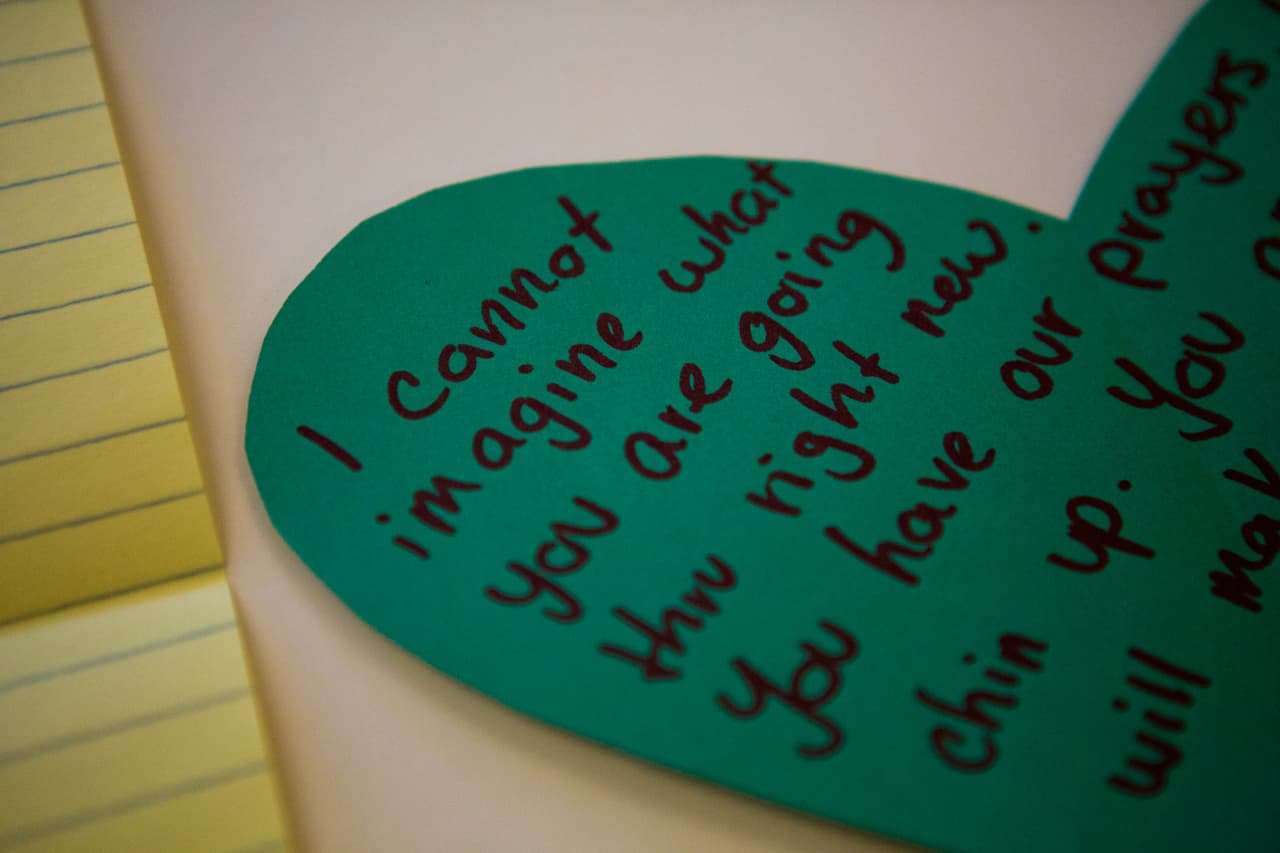
"It was just so clear in being there that for many years to come that people all over the world would need a way to process what had happened," Joseph said. "And there was something about the memorial that we knew was going to play a role in that."
Iron Mountain also digitized artifacts from the Sandy Hook Elementary School shooting. For Boston, the company is scanning the hundreds of letters mailed to City Hall. The online display will officially launch on April 15 to mark the tragedy’s one year anniversary. Joseph hopes it will be a place for people to heal, even virtually.
26.2: Beyond The Finish Line Of The 2014 Boston Marathon:
- 4/2: Boston Icon Marathon Sports Becomes An Ad Hoc Memorial
- 3/21: Medical Team Preps For Record Crowd
- 3/11: Officials Seek Balance Between Security, Celebration
- 3/10: Survivor Erika Brannock Anticipates Return To Boston
- Why I Run: What's Your Marathon Motivation?
- Oral History Project: Marathon Reflections
- Event: '26.2: Beyond The Finish Line' With Tom Ashbrook
- Complete 2014 Boston Marathon Coverage
